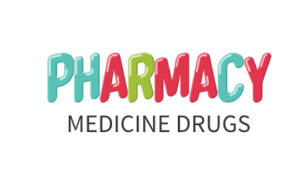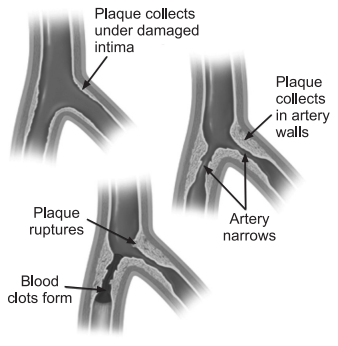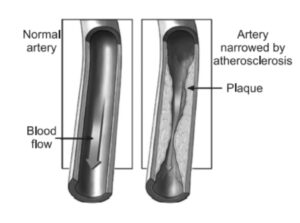Arteriosclerosis vs Atherosclerosis | Definition with Meaning and Difference & Comparison
Arteriosclerosis
Arteriosclerosis can occur when arteries grow thick and stiff and restrict blood flow
to organs and tissues in the body. This gradual process, also known as hardening of
the arteries, weakens arteries and can develop in various organs, most commonly
the heart. Arteries circulate blood throughout the body, but when plaque, fat, cholesterol and other cellular waste deposite on artery walls, arteriosclerosis can develop. Arteriosclerosis can develop into atherosclerosis. This condition can cause heart disease, strokes, circulation problems in the arms and legs, aneurysms that can cause life-threatening internal bleeding and chronic renal failure.
VS
Atherosclerosis (or arteriosclerotic vascular disease) is a condition where the arteries become narrowed and hardened due to an excessive buildup of plaque around the artery wall. Plaque is made up of fat, cholesterol, calcium, and other substances found in the blood. Over time, plaque hardens and narrows arteries. The disease disrupts the flow of blood around the body, posing serious cardiovascular complications. Atherosclerosis can lead to serious problems, including heart attack, stroke, or even death. Healthy arteries are flexible and elastic, but over time, the walls in arteries can harden, a condition commonly called hardening of the arteries.
Pathophysiology of Arteriosclerosis
The lesions begin as the intima (innermost layer of blood vessel wall) of the arterial wall start to fill up with the deposition of cellular wastes. As these start to mature, they can take different forms of arteriosclerosis. All are linked through common features such as the stiffening of arterial vessels, thickening of arterial walls and degenerative nature of the disease.
- Arteriolosclerosis, unlike atherosclerosis, is a sclerosis that only affects small arteries and arterioles, which carry important nutrients and blood to the cells.
- Atherosclerosis is the narrowing of arteries because of deposition of plaque, usually made up of cholesterol, fatty substances, cellular waste products, calcium and fibrin, inside the arteries. This affects large and medium-sized arteries; however, its positioning varies person to person.
- Monckeberg’s arteriosclerosis or medial calcific sclerosis is seen mostly in the old age patients, commonly in arteries of the extremities.
- Hyperplastic: Hyperplastic arteriosclerosis refers to the type of arteriosclerosis that affects large and medium-sized arteries.
- Hyaline type: Hyaline arteriosclerosis, also referred to as arterial hyalinosis and arteriolar hyalinosis, refers to lesions that are caused by the deposition of homogenous hyaline in the small arteries and arterioles.
Arteriosclerosis subtypes: Pathologically, there are two subtypes of arteriosclerosis:
- Hyperplastic type
- Hyaline type
A sub classification of arteriolosclerosis is the fibromuscular intimal thickening. There is typically hyalinosis or deposition of hyaline protein in these lesions as well. This includes the categories like:-
- Transplant related arteriopathy or arterial damage
- Restenosis lesions that are seen after balloon angioplasty or stenting of the heart’s coronary blood vessels.
- Non-specific intimal thickening as occurs in temporal arteries (arteries around the forehead and temples) with aging. Transplant arteriopathy is intimal enlargement without atherosclerotic changes seen in the walls. Transplant arteriopathy affects large and small muscular arteries and veins as well. It commonly causes inflammation in the 1 or more of the 3 layers in the blood vessel walls .Usually, the intima is affected more than the media or adventitia, but all three layers may be affected. After inflammation there is fibrosis and finally calcification and thrombosis may occur.
Difference between Arteriosclerosis and Atherosclerosis | What distinguishes Atherosclerosis from Arteriosclerosis | Arteriosclerosis vs Atherosclerosis
| Arteries grow thick and stiff and restrict blood flow to organs and tissues in the body. | Arteries become narrowed and hardened due to an excessive buildup of plaque |
| Arteriosclerosis is hardening of the arteries, weakens arteries and can develop in various organs, most commonly the heart | Arteriosclerosis is the stiffening or hardening of the artery walls |
| Problems Caused: Heart disease, strokes, circulation problems in the arms and legs, aneurysms that can cause life-threatening internal bleeding and chronic renal failure. | Problems Caused : High blood pressure ,High levels of cholesterol Smoking ,High levels of sugar in the blood |
| Arteriosclerosis can develop into atherosclerosis. | Atherosclerosis cannot or may develop into arteriosclerosis |


